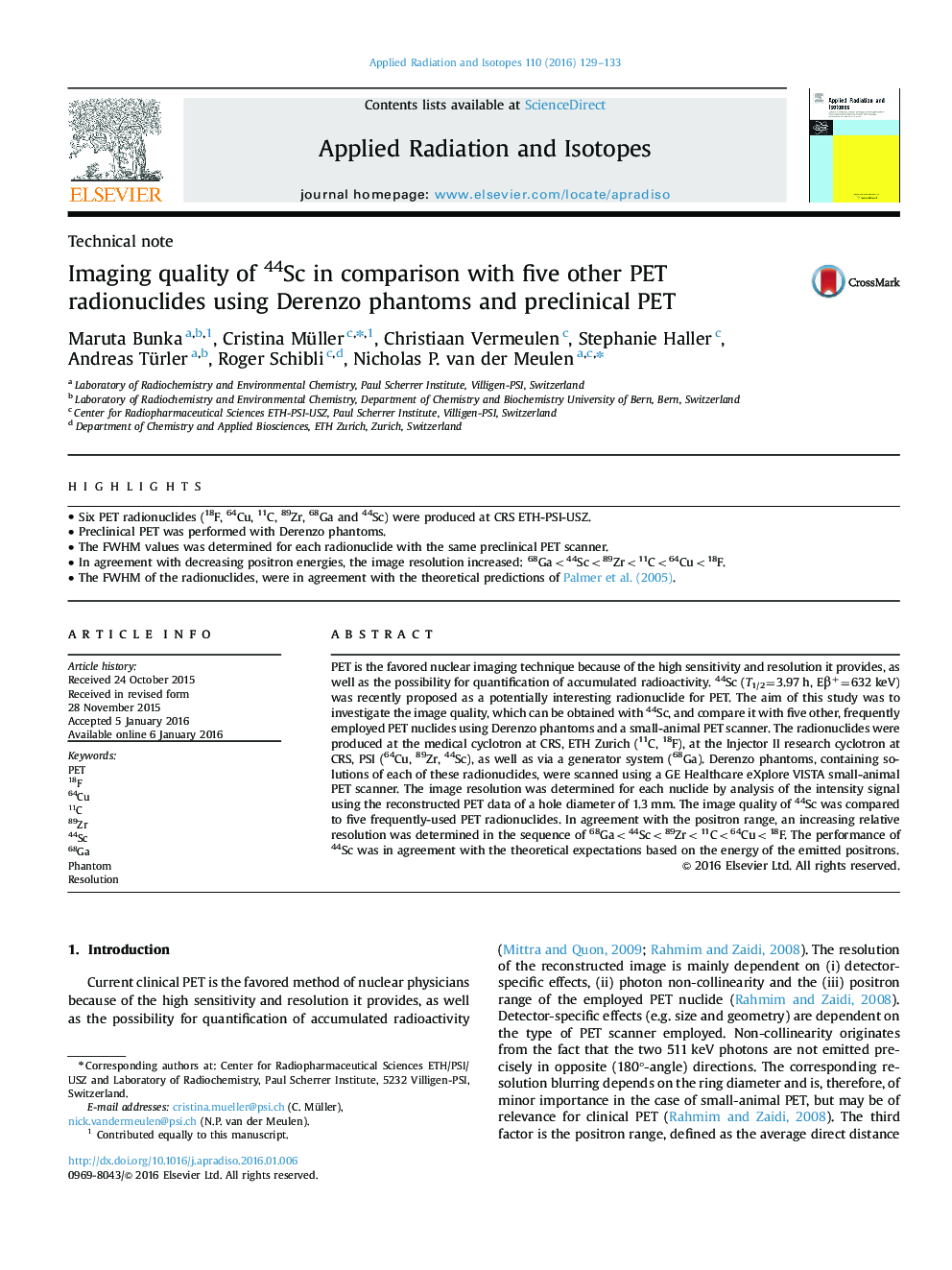| Article ID | Journal | Published Year | Pages | File Type |
|---|---|---|---|---|
| 8209268 | Applied Radiation and Isotopes | 2016 | 5 Pages |
Abstract
PET is the favored nuclear imaging technique because of the high sensitivity and resolution it provides, as well as the possibility for quantification of accumulated radioactivity. 44Sc (T1/2=3.97 h, Eβ+=632 keV) was recently proposed as a potentially interesting radionuclide for PET. The aim of this study was to investigate the image quality, which can be obtained with 44Sc, and compare it with five other, frequently employed PET nuclides using Derenzo phantoms and a small-animal PET scanner. The radionuclides were produced at the medical cyclotron at CRS, ETH Zurich (11C, 18F), at the Injector II research cyclotron at CRS, PSI (64Cu, 89Zr, 44Sc), as well as via a generator system (68Ga). Derenzo phantoms, containing solutions of each of these radionuclides, were scanned using a GE Healthcare eXplore VISTA small-animal PET scanner. The image resolution was determined for each nuclide by analysis of the intensity signal using the reconstructed PET data of a hole diameter of 1.3 mm. The image quality of 44Sc was compared to five frequently-used PET radionuclides. In agreement with the positron range, an increasing relative resolution was determined in the sequence of 68Ga<44Sc<89Zr<11C<64Cu<18F. The performance of 44Sc was in agreement with the theoretical expectations based on the energy of the emitted positrons.
Related Topics
Physical Sciences and Engineering
Physics and Astronomy
Radiation
Authors
Maruta Bunka, Cristina Müller, Christiaan Vermeulen, Stephanie Haller, Andreas Türler, Roger Schibli, Nicholas P. van der Meulen,
